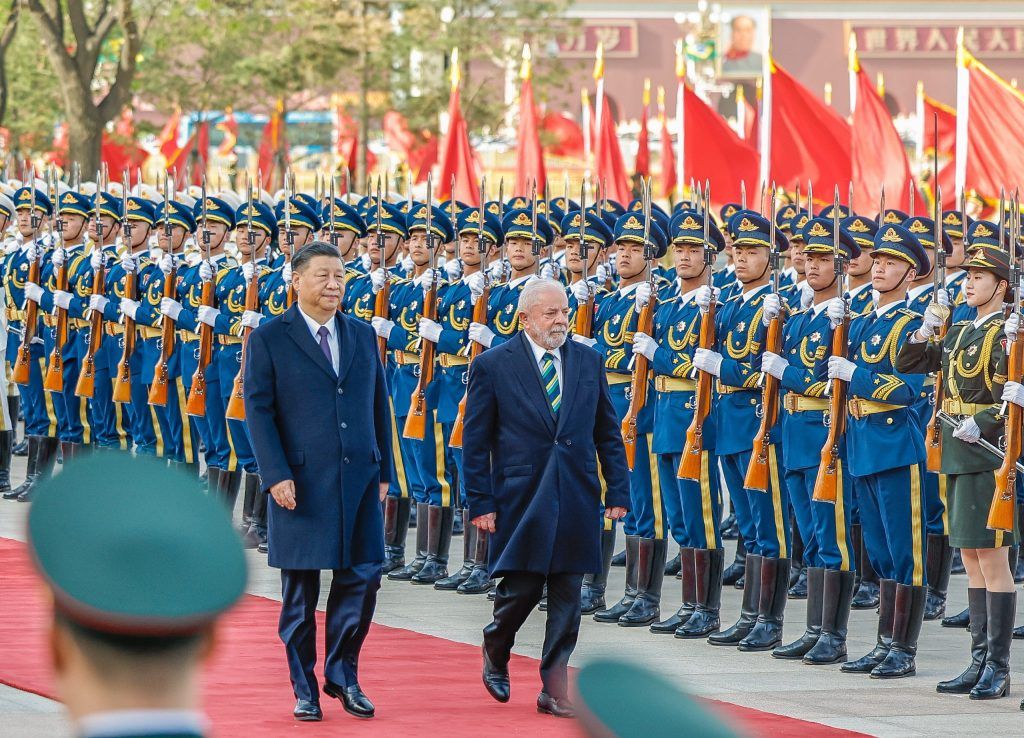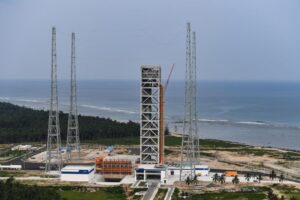
Lula’s return, a key factor
Although Brazilian diplomats have remained skeptical about the benefits of membership in the Belt and Road Initiative (BRI), speculation that Brazil could sign a memorandum to join the initiative has grown steadily since the return of Lula as president in early 2023.
Recent visits to China by Lula and his vice president, Geraldo Alckmin, took place without any announcements about the Belt and Road. However, during an event in July, Lula hinted that Brazil could join: “Since China is interested in discussing the Silk Road, we need to prepare a proposal to discuss what it offers to us,” he said. «What advantages will Brazil obtain by participating? What significant role will Brazil play?
With Xi Jinping scheduled to pay a state visit to Brazil during the G20 conference in Rio de Janeiro in November, and with both presidents also meeting that same month at the Asia-Pacific Economic Cooperation (APEC) summit in Peru, officials The Chinese are eager to close the deal during the 50th anniversary of relations between Brazil and China.
“There is a different perspective between the president’s inner circle and the Ministry of Foreign Affairs,” says Pablo Ibañez, coordinator of the Asian Studies Observatory at the Federal Rural University of Rio de Janeiro. “Lula knows the value of strengthening relations with the Global South and prefers to foster ties outside the axis of the United States and Europe.”
However, Ibañez points out that the Ministry of Foreign Affairs “is very concerned about the implications.” He adds: «What can we gain from this? Could it bring retaliation from the United States? The Belt and Road is another stage in the expansion of Chinese global power. “It is huge and fundamental for the Chinese government.”
According to experts interviewed by Dialogue EarthBrazil is carefully weighing the possible benefits of joining the Belt and Road Initiative (BRI), in a bid to gain the greatest possible advantage in negotiations with China.
“A few years ago, I think Brazil did not have a clear understanding of the strategic reasons for joining the BRI,” says João Cumarú, researcher at Plataforma CIPÓ, an NGO dedicated to climate and foreign affairs. “Now, however, some members of Lula’s government are beginning to think strategically about what Brazil should ask for in exchange for its participation.”
The details are uncertain, but specialists say Brazil is likely seeking support that goes beyond exporting raw materials to China and importing manufactured goods in return.
China has been Brazil’s largest trading partner since 2009, with bilateral trade reaching $80 billion in the first half of 2024, according to Brazilian foreign trade data. However, around 80% of Brazil’s exports to China consist of just three products: oil, iron ore and soybeans.

Last year, during his visit to Beijing, Lula signed 15 agreements, including space technology, renewable energy, climate cooperation, electric mobility and green financing.
João Cumarú believes there are three key areas in which Brazil should seek benefits from joining the Belt and Road Initiative (BRI): “Cooperation in energy and green technology, particularly in the context of the energy transition; reindustrialization efforts that seek to add value to our raw materials by interpreting Chinese technologies for land reclamation and sustainable practices, and government-planned infrastructure projects, especially with regard to the integration of South America into various transportation routes ».
The researcher added that, in his conversations with Brazilian government figures, financing with China has been another topic of particular interest. «They were exploring how the Chinese could finance part of the federal government’s new industrialization, ecological transformation and energy transition programs. “At that time, there was an initial idea that the BRI could be a financing avenue for these projects.”
An evolving Belt and Road
The BRI has evolved significantly since its early days, and Chinese leadership has signaled its intention to guide the initiative toward greater diversification of investments in green or innovation sectors, rather than the large infrastructure projects that marked its first decade.
“China is struggling to define the BRI in this new phase,” says Margaret Myers. “We’re not going to see the same level of large-scale infrastructure development as we have in the past.”
On the Brazilian side, the situation is also complex. China’s potential investments in electric vehicles in Brazil, for example, have raised concerns in the local industry, according to Cumarú.
However, experts suggest it would be unwise to rule out the possibility of a major infrastructure investment to seal the deal. Brazil faces a significant shortfall in infrastructure investment, and a World Bank report suggests the country needs to allocate $778 billion to close this gap by 2030, in line with the United Nations Sustainable Development Goals.
Last year, Lula announced a new Growth Acceleration Program (PAC) to spend 1.7 trillion reais (approximately $300 billion) on infrastructure, energy and transportation over four years.
“China is trying to take this to a new level of negotiations,” says Pablo Ibañez. «The Chinese ambassador to Brazil recently gave an interview to CNN Brazil, where he spoke about the importance of investment in Brazil and the region. He mentioned that China could help Brazil with the PAC. “This indicates that Brazil’s participation in the Belt and Road is increasingly a reality.”
Another point of interest is the long-discussed Central Bioceanic Railway Corridor, a proposed 3,750-kilometer railway that would connect the Pacific Ocean to the Atlantic through Peru, Bolivia and Brazil. “I have heard rumors lately that this project is still being considered and is being discussed in relation to the development of the port of Chancay, so it is not dead,” says Margaret Myers. The port of Chancay, in central Peru, is one of the largest investments to come to Latin America under the Belt and Road Initiative (BRI), and is scheduled to be inaugurated in November, in a ceremony at that both Xi Jinping and Lula will probably attend.
Chinese financing of the proposed railway would align well with Lula’s goal of achieving greater integration between South American countries, led by Brazil. Last year, Lula launched the “Five Routes” initiative to better connect Brazil with its neighbors and enable greater trade within the continent.
“Why is now a good question?” says Myers. “I don’t know if there are any particular projects they are trying to get China to support right now. Brazil is organizing the G20; “It could be that this is a moment for both countries to demonstrate a strong relationship.”
That said, Myers believes there is a risk of overinterpreting the symbolism of such an ad. “In my opinion, [unirse a la BRI] “It is primarily symbolic, representing a degree of support for China’s global agenda and China’s growing global role and vision.”
“Sometimes when countries join the initiative, agreements are announced simultaneously. But these tend to be one-time deals,” Myers added. “It is not as if we saw an explosion of general economic activity before or after the decision to join the BRI. “We generally do not observe a major change in the overall dynamics before and after accession to the BRI.”
Note: this is an article republished from the media “Dialogue Earth” through a cooperation agreement between both parties for the dissemination of journalistic content. Original link.
Source: https://reporteasia.com/opinion/2024/10/06/brasil-franja-y-la-ruta-china/

